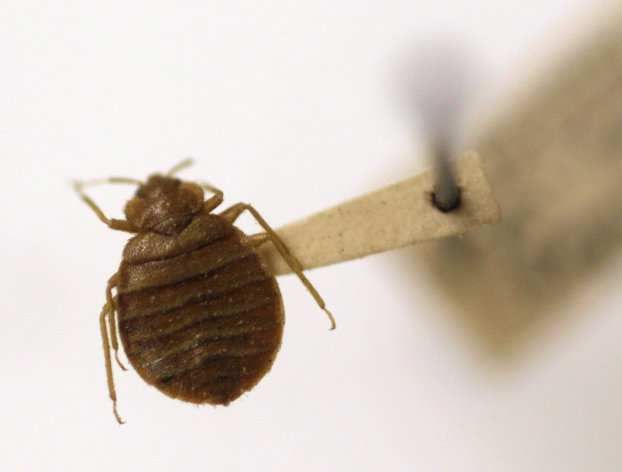 By Jen Wieczner | MarketWatch – 18 hours ago
By Jen Wieczner | MarketWatch – 18 hours ago
More than a third of pest-management companies treated bedbug infestations in hospitals in 2012, 6% more than the year before and more than twice as many as in 2010, according to a survey released today by the National Pest Management Association. The percentage of exterminators dealing with bedbugs in nursing homes has also almost doubled since 2010, to 46%. Bedbug experts also report seeing them in ambulances.
Hospitals are already cracking down on anything that could increase the risk of patient infections, which not only can be deadly but may also lead to more readmissions and reduced federal funding under the Affordable Care Act. While bedbugs have not been found to transmit infections to humans, they leave itchy bites after feeding on people’s blood, which can lead to secondary infections when victims scratch, opening themselves up to bacteria. This is especially problematic in hospitals, where there is a greater likelihood of catching the highly potent and contagious staph infection known as MRSA, says Dr. Jorge Parada, medical director of the infection prevention and control program of Loyola University Health System in Chicago. “You don’t need one more ingredient to increase your risk of infections in the hospital,” he says.
Although hospitals are putting a growing emphasis on strict cleanliness and sterilization protocols, bedbugs still arrive via the many patients and visitors going in and out of their emergency rooms and waiting areas. “We never know when somebody might show up with bedbugs,” Parada says.
The high instance of bedbugs in nursing homes is also concerning, he adds, because hospitals receive many transfers from such facilities, and elderly people often don’t exhibit the same telltale signs of bedbugs—red, raised, itchy lesions—that other patients do: “It’s one less tipoff that it’s a problem.”
To be sure, say experts, you’re still more likely to catch other kinds of bugs in hospitals than you are to get bedbugs—and they aren’t a medical emergency the way other complications would be, says Missy Henriksen of the National Pest Management Association. That said, if bedbugs become a problem in a hospital, they can be a persistent nuisance. “The bedbugs, and particularly the eggs of bedbugs, are even harder to kill than the spores of the bacteria,” says Dr. Dick Zoutman, a professor and infectious disease specialist at Queen’s University in Ontario, Canada. “I wouldn’t have thought that to be the case.”
Zoutman helped develop a new hospital sterilization system that can kill highly drug-resistant bacteria as well as bedbugs. The sterilization technology, marketed as AsepticSure by San Francisco-based Medizone International—a firm that is traded over-the-counter as MZEI.OB and MZEI.QB—uses gas to effectively eradicate 100% of bacteria in less than an hour, according to the company. Medizone just began distributing its new disinfecting technology to Canadian hospitals earlier this month, and is seeking approval to market it in the U.S., too.
But Zoutman, who now serves as Medizone’s chief medical officer, says that in tests, the system took up to 24 hours to kill bedbugs, and up to 36 hours to kill their eggs. He says Medizone is now working to adapt the system to kill bedbugs in a faster and more effective manner, both for hospitals and other settings as well.
Advances like that would be eagerly welcomed in hospitals, but for now, exterminators are their only realistic option for addressing a pest invasion. “No patient,” Parada says, “is going to look favorably on a hospital that’s had a bedbug infestation.”
More From MarketWatch
-
Apple earnings drop; dividend, buyback raised
-
Twitter trading influence laid bare by fake tweet
- The tax advantages of being a landlord

No comments:
Post a Comment